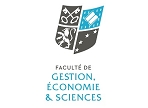Présentation
None
In Macroeconomics II, the different sessions based on the book of Blanchard will present an integrated, global view of macroeconomics, enabling students to see the connections between goods markets, financial markets, and labor markets worldwide.
PART I: THE SHORT RUN
1. The Good Market and Financial Markets I
This session introduces functional notation; modeling terminology: exogenous and endogenous variables, behavioral equations, identities, and equilibrium conditions. It describes the Keynesian cross model (although it does not use this expression), and associated terms, such as the (marginal) propensity to consume, disposable income, and autonomous spending. It defines stock and flow variables and distinguishes wealth (a stock) from income (a flow). It makes use of balance sheets for the central bank and private banks.
2. Goods and Financial Markets; The IS-LM Model
The session introduces the IS-LM framework; the concept of policy mixes to achieve macroeconomic goals; the use of “+” and “-” below the argument of a function to indicate the effect of an increase in the value of the argument on the value of the function.
3. Financial Markets II
The session introduces the nominal versus real interest rates and how risk factors into the market returns of different bonds. It discusses the macroeconomic role of financial intermediaries. It extends the IS-LM model developed previously to account for more than one interest rate.
PART II: THE MEDIUM RUN
4. The Labor Market
The session reviews the definition of key labor market terms and introduces several new ones, including the participation rate, discouraged workers, separations, layoffs, and quits. It makes use of a production function. It introduces wage-setting and price-setting relations. It defines analytically the natural rate of unemployment and the natural level of output. It introduces the concept of an expected price level, the first expectation seen in the book.
5. The Phillips Curve, the Natural Rate of Unemployment, and Inflation.
The session introduces the original Phillips curve and its modern, expectations-augmented or accelerationist variant. It expands the notion of the natural rate of unemployment. In the context of the accelerationist Phillips curve, the natural rate is the unique rate of unemployment consistent with a constant rate of inflation. The chapter introduces the concept of inflation expectations being de-anchored or re-anchored during various time periods. In other words, the way people form inflation expectations can and does change over time based on assumptions of how the central bank will react to inflation.
PART III: THE OPEN ECONOMY
6. Openness in Goods and Financial Markets
The nominal exchange rate is the foreign currency price of domestic currency. The real exchange rate is the relative price of domestic goods. An increase in either of these variables is an appreciation from the perspective of the domestic country. The balance of payments is a record of one country’s transactions with the rest of the world over a given period of time.
The balance of payments consists of a current account, which records transactions in goods and services, and a financial account, which records transactions in assets. Until recently this account was called the capital account so you still see the term used in the many
Modalités
Inverted classes, personal works and tutorials sessions in practice. Assessment will take place during each lecture.
- Powerpoints
- Tutorials and development of analytical thinking
- Assessment during each lecture class
Ressources
Macroeconomics, <i>7th edition. </i>Olivier Blanchard. List Copyright © 2017.<b> </b>||<b>, </b><b> </b><i></i>||






